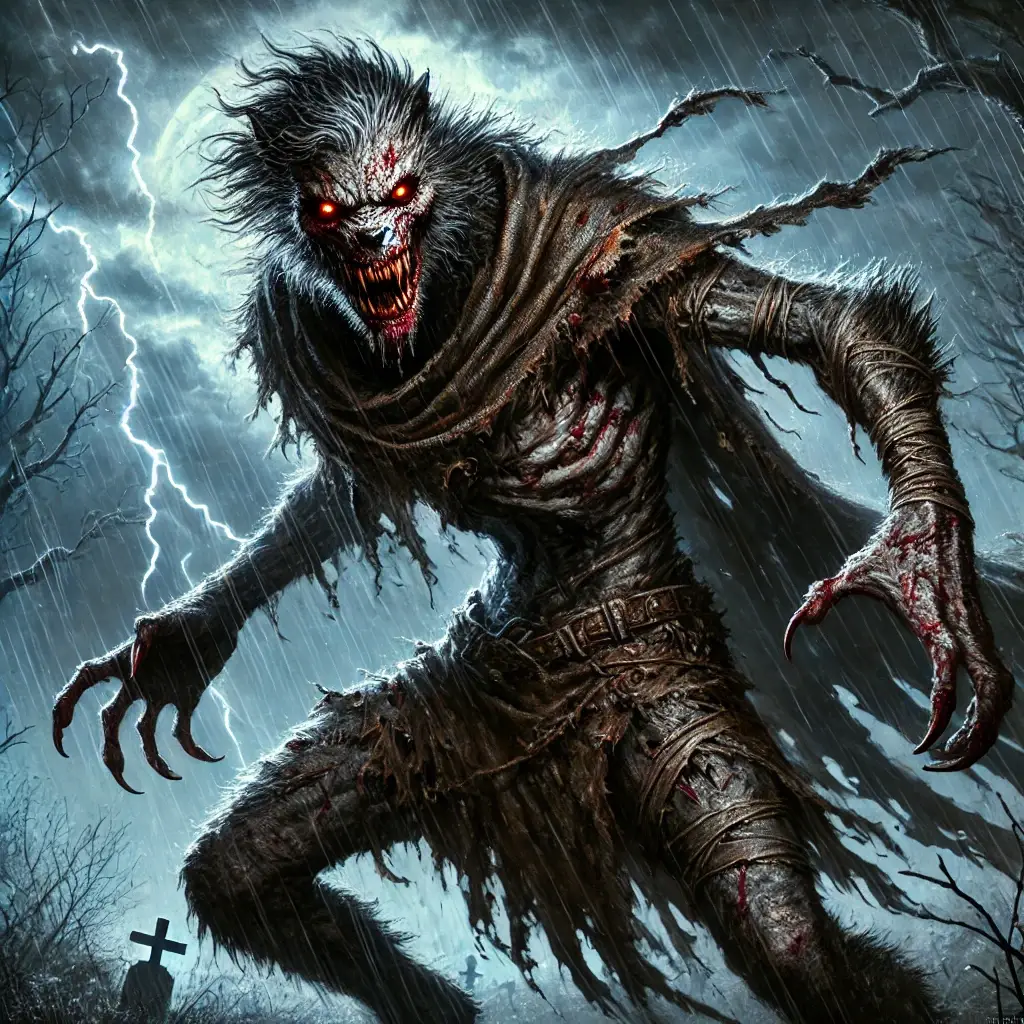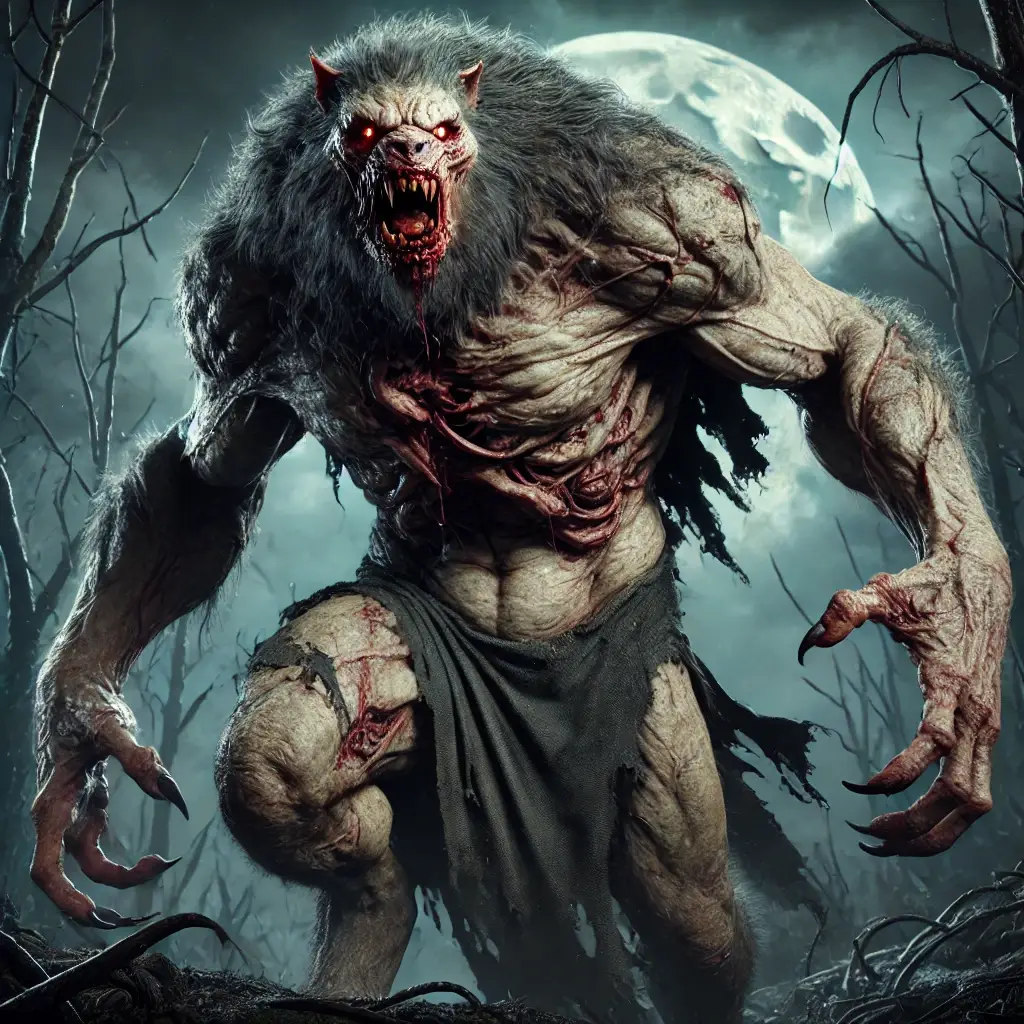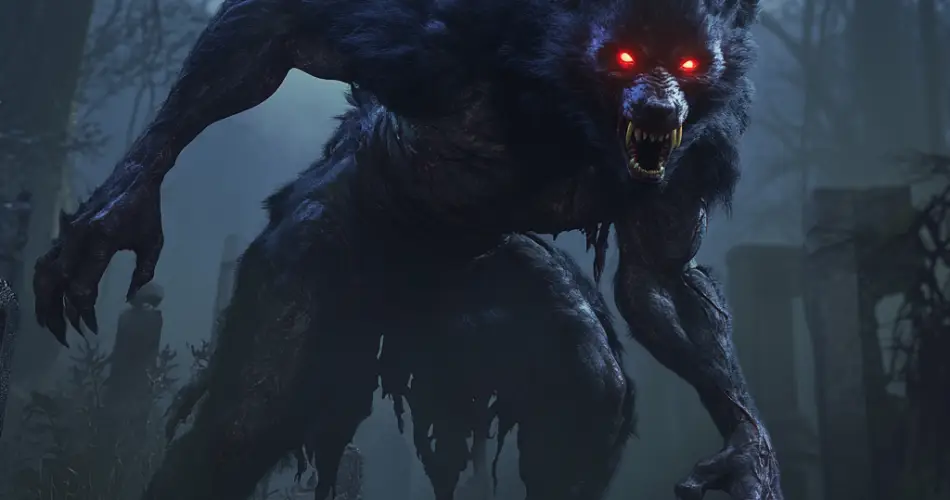Vrykolakas are ancient nightmarish creatures with deep roots in Greek mythology and folklore. They are said to be caught between life and death. Although they are now confused with vampires, these ancient monsters are more similar to the modern idea of zombies or ghouls.
Like the corpse-eating Nachzehrer of German folklore, these creatures are believed to dig themselves out of graves to spring upon victims, tear them open, and eat their liver. However, unlike the Nachzehrer, Vrykolakas have an unnatural appetite for human blood. It is even said that the sheer terror of beholding a vrykolakas can drive a person mad.
Classified as revenants – undead or reanimated corpses – these abominable creatures return to torment the living. Some accounts tell of whole families driven away from their native islands to wander in exile because of these creatures.
What Are Vrykolakas?

Vrykolakas, or Vorvolakas, are reanimated corpses in ancient Greek mythology. They are unable to cross into the afterlife, so they wander around as restless souls, causing general disturbance, scavenging, and attacking unsuspecting victims.
Vrykolakas are often depicted as mindless in their rage, indiscriminately harming anyone who crosses their path. These creatures are also known to cause unexplained deaths or sudden epidemics.
Unlike other mythical creatures with complex motivations, Vrykolakas are portrayed as purely evil beings, lacking any redeeming traits. This isn’t unexpected, as they are believed to be reanimated corpses of those rejected by both the living and the dead due to various taboos.
How are Vrykolakas Formed
There are various ways in which individuals can transform into Vrykolkas. One such path is the improper performance of burial rites. In the ancient Greek culture, the dead are meant to be honoured with precise rituals; any deviation from tradition can have dire consequences. If the proper prayers are not spoken, or if the body is not interred with due respect, the soul of the deceased may become restless, unable to find peace in the afterlife. This restless spirit denied the finality of death, might return to the world of the living as a vrykolakas, its body animated by a dark force driven by an insatiable hunger and a desire for vengeance.
Another cause for this transformation lies in the nature of one’s death. Those who meet their end violently, through murder, suicide, or tragic accidents, are particularly vulnerable. The violent severing of life is said to leave a stain on the soul, preventing it from transitioning smoothly to the afterlife.
In such cases, the deceased might rise again, not as a gentle spirit, but as a vrykolakas, trapped in a grotesque parody of life, wandering the earth in search of blood or retribution.
People who practise dark magic or who die without baptism could also rise again as Vrykolakas.
What Do Vrykolakas Look Like?
Vrykolakas combine grotesque decay with unnatural vitality. They are often depicted with bloated, “drumlike”, and ruddy bodies, or their skin stretched and darkened to nearly black. Sharp, elongated teeth and nails – used to claw out of graves and attack victims – are common traits, as are glowing, blood-red eyes.
Characteristics and Powers of the Vrykolakas

One of the vrykolakas’ most unsettling abilities is its penchant for knocking on doors. Under the cover of night, it will approach a household and knock, calling out in a voice that might mimic someone familiar. Any unsuspecting victim who answers that call is doomed to wither and die within the next 24 hours.
In some stories, the Vrykolaka is blamed for sleep paralysis; it is said that it sits on the chest of its victims in the middle of the night, making breathing impossible. As the victim suffocates under the weight, it tears them open and feasts on the organs.
Unlike the traditional Vampires, these ancient creatures are unaffected by sunlight. They can walk during the day and blend into the crowd, looking for their next victim. They are also said to possess supernatural strength that allows them to easily overpower their prey.
Are Vrykolakas Real?
The existence of the Vrykolakas, like many creatures of folklore, has no scientific backing. However, there is archaeological evidence that the people of Greece in earlier centuries strongly believed they existed.
Historical accounts of Vrykolakas reveal that exhumations were carried out to “prove” that Vrykolakas was responsible for local tragedies. So if a body was found unusually well-preserved or showing signs of blood at the mouth, it was taken as evidence that the deceased had become a Vrykolakas.
This led to several rituals aimed at preventing the dead from rising, such as staking the corpse, putting heavy stones over it, burying it downwards-facing, decapitating it, dismembering it, or even cremating it to ensure it could no longer harm the living.
Perhaps, in a metaphorical sense, Vrykolakas do exist in that the heinous acts of evil or immoral people often haunt those who were associated with them, even after they are long dead.
What is a Vrykolakas’ Weakness?
Vrykolakas typically lack the vulnerabilities associated with other creatures they are often confused with, such as a vampire’s weakness to sunlight or a werewolf’s susceptibility to silver. However, religious symbols and rituals appear to have some influence over them.
Priests usually perform specific rites to prevent the dead from becoming Vrykolakas or to exorcise suspected ones. But, traditionally, various apotropaic rituals were carried out on people suspected to turn into Vrykolakas after death.
These practices include burying corpses face-down, placing objects like scythes near graves, putting religious inscriptions on the corpse, severing knee tendons, scattering seeds on the grave, and staking or cremating suspected Vrykolakas. These actions were believed to prevent transformation or keep the Vrykolakas occupied.
However, if a Vrykolakas is already haunting, the suspected corpse is exhumed and exorcised with prayers until it dissolves. If ineffective, the body is cremated, typically on a Saturday since it is the only day when a vrykolakas is believed to rest in its grave.
